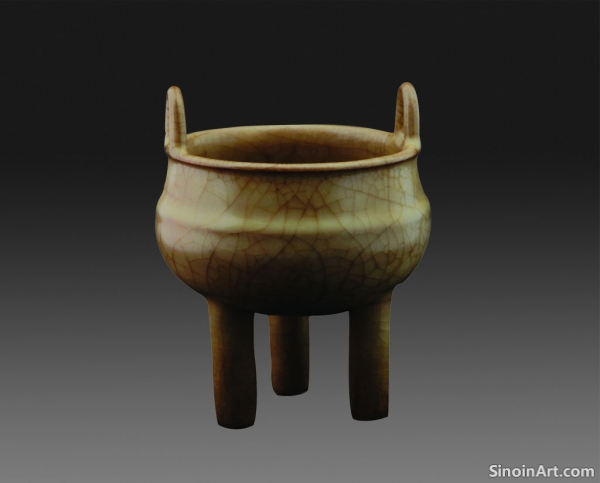Jun Ware: The Art of Transmutation
|
Jun ware is another important and highly distinctive ceramic style of the Song Dynasty, known for its thick, opalescent glazes in a range of colors, including shades of blue, purple, red, and green. Unlike the more subtle celadon, Jun ware is characterized by its dramatic colors and its seemingly spontaneous, yet carefully controlled, effects. Jun ware demonstrates the incredible technical skill of Song potters.  The glazes on Jun ware often exhibit a range of colors, textures, and visual effects due to the way they were fired. This creates a dynamic and unpredictable beauty that is part of the appeal of Jun ware. The transmutation glazes of Jun were highly prized and are unique in the history of ceramics. The complexity of the glazes is still marveled at today.  Jun ware was primarily produced at kilns in Henan province, which had a long history of ceramic production. The potters at these kilns pushed the boundaries of glaze technology. The kilns at Jun are a testament to the power of the ceramic arts.  The forms of Jun ware were often simple, robust, and functional, including bowls, dishes, and flowerpots. The focus was on allowing the beauty of the glaze to be the central feature of the pieces. The forms are thus designed to showcase the dramatic quality of the glazes. The enduring appeal of Jun ware lies in its dramatic beauty, its unexpected and varied coloration, and its demonstration of the extraordinary technical skills of the Song potters. The legacy of Jun ware can be seen throughout the ceramic tradition. Jun wares are sought after for their unique characteristics. |
Tag : Jun ware, Song Dynasty ceramics, Chinese pottery, Transmutation glazes, Jun kilns
Related information
- Guan Ware: The Mystery of Imperial Ceramics
- Blackwares of the Song Dynasty: Jian and Beyond
- The Role of Kilns in Song Ceramic Production
- The Elegance of Guan Ware and Ge Ware Crackle Glazes
- The Role of the Kilns in Song Ceramic Innovation
Guan ware, rare imperial ceramics of the Southern Song, are characterized by thick, crackled glazes in shades of gray, blue, or green, understated forms, and an enduring sense of mystery surrounding their production and kilns.
Song Dynasty blackwares, including Jian and Jizhou, feature diverse and artistic dark glazes like "hare's fur," “oil spot,” and decorative techniques, showcasing the range and creativity of Song potters.
The technological advancements in kiln construction and firing techniques during the Song Dynasty were crucial to the high quality and wide variety of ceramic wares produced during the period. The use of specific kilns was essential to the production of the unique and desirable pieces that are a hallmark of the Song era.
Guan ware and Ge ware, both associated with the Southern Song Dynasty, are known for their distinctive crackled glazes, which were caused by the different contraction rates of the glaze and the ceramic body. These wares, which are also often referred to as “crackled ware”, exhibit a wide variety of crackle patterns, from fine “fish roe” patterns to more pronounced “ice crackle” patterns.
Song Dynasty kilns, such as those in Longquan, Ding, Jun, and Jian, were centers of experimentation and artistic innovation, advancing kiln technology, glaze effects, and the training of potters, leading to a diversity of high-quality ceramic styles.